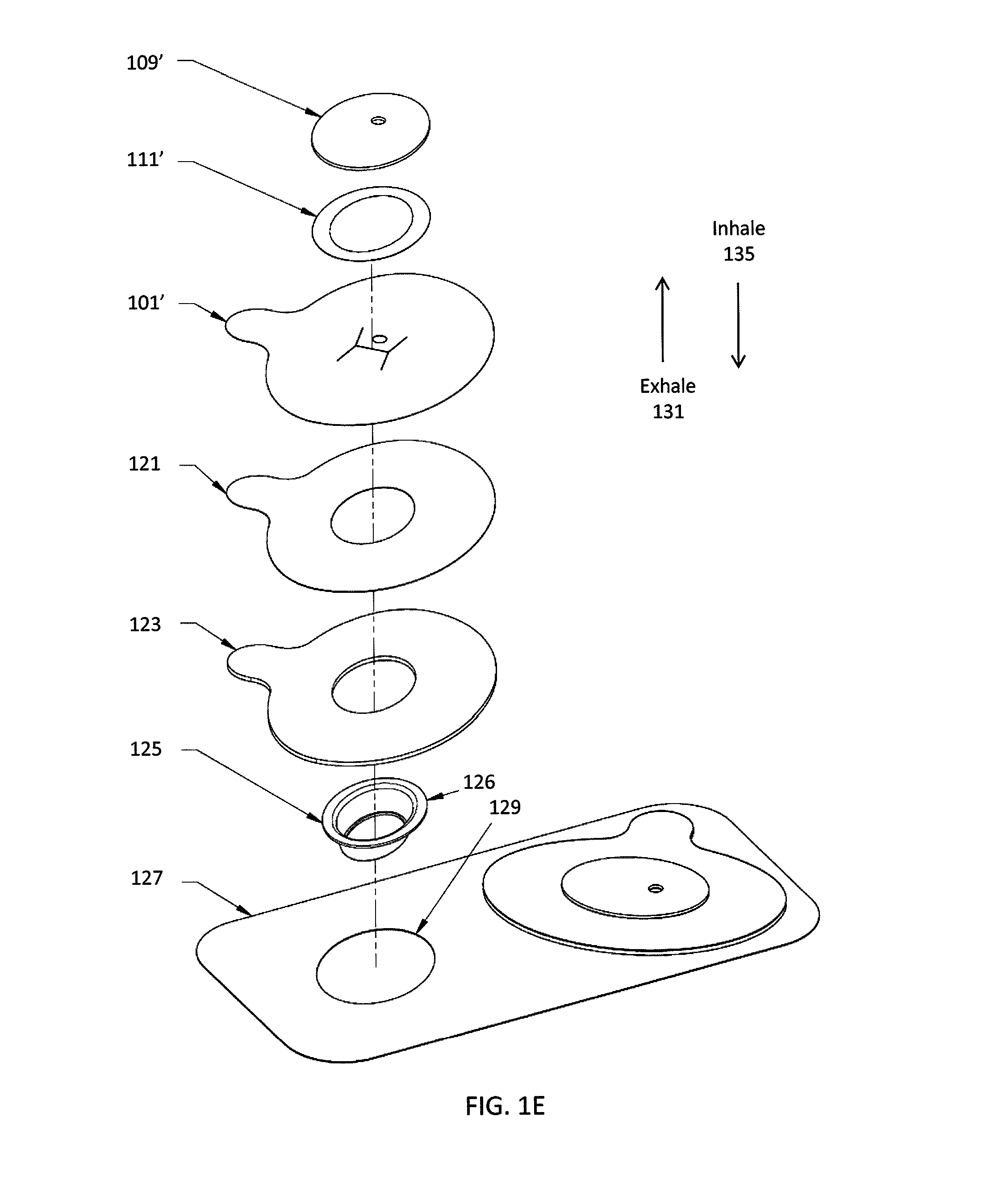Layered nasal respiratory devices
a technology of respiratory devices and nasal cavities, applied in the field of nasal respiratory devices, can solve the problems of osa posing a significant public health issue, osa can be life-threatening, and the alertness decrease, so as to reduce noise, inhibit exhalation, and prevent the tip vibration
- Summary
- Abstract
- Description
- Claims
- Application Information
AI Technical Summary
Benefits of technology
Problems solved by technology
Method used
Image
Examples
Embodiment Construction
[0080]In general, the devices, systems and methods described herein are for nasal respiratory devices that include a holdfast that seals the device in communication with the subject's nasal cavity (e.g., over, within or around the subject's nostril(s)), and an airflow resistor configured to inhibit exhalation more than inhalation.
[0081]These devices and methods may provide improvement over previously described nasal devices, however, in particular, the nasal devices described herein may include a combined or integrated holdfast region (or portion of the holdfast) and flap portion of the airflow resistor. Combining elements of the holdfast with elements of the airflow resistor may enhance the operation and the manufacturability of the nasal devices.
[0082]In addition, the nasal devices described herein may include a rim body portion (which may also be referred to as a valve cone, and in some variations may be configured as an aligner or alignment element) that extends from the holdfas...
PUM
| Property | Measurement | Unit |
|---|---|---|
| angle | aaaaa | aaaaa |
| adhesive | aaaaa | aaaaa |
| noise reduction | aaaaa | aaaaa |
Abstract
Description
Claims
Application Information
 Login to View More
Login to View More - R&D
- Intellectual Property
- Life Sciences
- Materials
- Tech Scout
- Unparalleled Data Quality
- Higher Quality Content
- 60% Fewer Hallucinations
Browse by: Latest US Patents, China's latest patents, Technical Efficacy Thesaurus, Application Domain, Technology Topic, Popular Technical Reports.
© 2025 PatSnap. All rights reserved.Legal|Privacy policy|Modern Slavery Act Transparency Statement|Sitemap|About US| Contact US: help@patsnap.com



